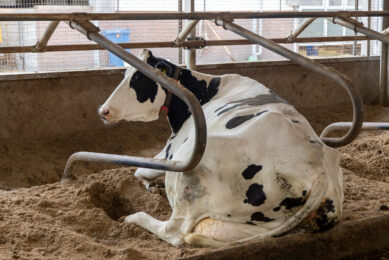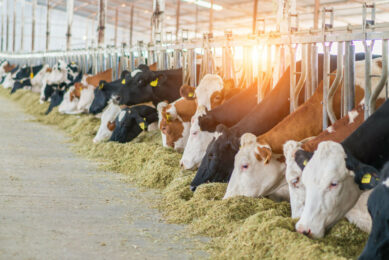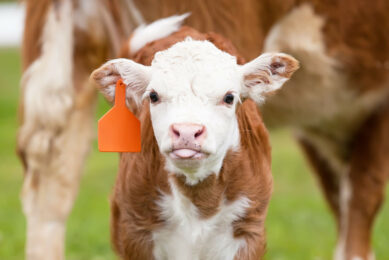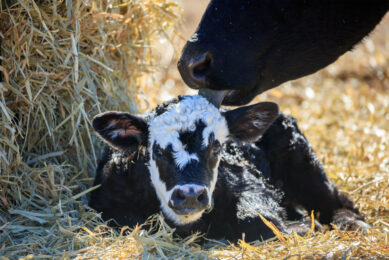How lock-up time affects dairy productivity
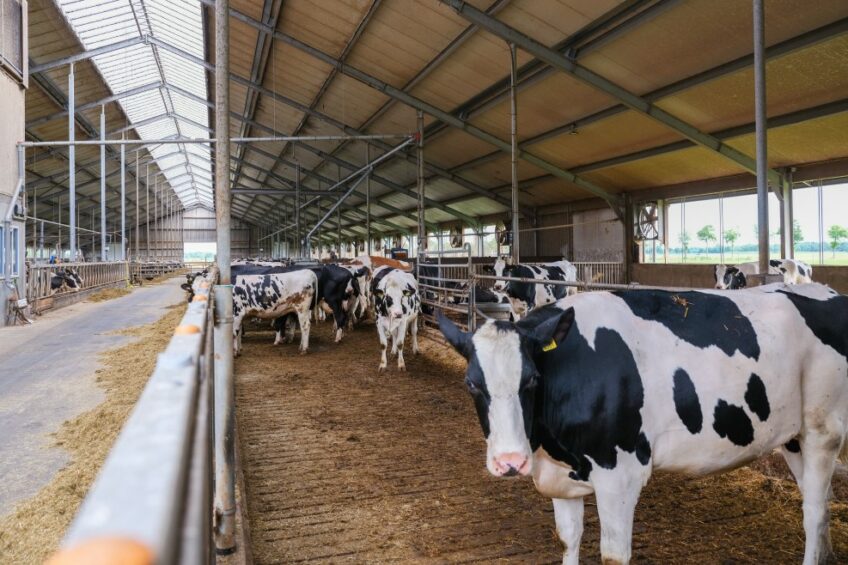
In a new study, researchers from Texas A&M University found the restraint of cows in self-locking head stanchions for extended periods inflicted detrimental effects on dairy cow performance.
Lock-up time is the amount of time an animal spends restrained or locked into a head stanchion per day which is usually located at feed bunks on dairy farms. Dairy cattle are locked up regularly for pregnancy diagnosis, artificial insemination, veterinary-related treatments and examinations, vaccinations, heat detection, and feeding purposes.
But, this head lock-up as a method of restraint has been found to have negative impacts on an individual animal’s well-being and productive performance within a herd, especially if the system is exploited beyond normal management routine.
Studies show that when this management practice is not executed properly and cows are restrained for extended periods of time (>4 hours daily), animals experience varying levels of stress that can compromise their production, health, and welfare.
In this study, researchers looked at different impacts of prolonged or extended lock-up time in dairy cattle.
Effects on milk production
According to observations from different studies, reduced milk production is common in cows when lock-up time exceeds 4 hours. In their research, scientists from the University of Cambridge found that during hoof trimming when cows are deprived of feeding and lying for more than 4 hours, milk yield is reduced by 2 litres per day for 3 days.
Longer periods of lock-up time are associated with stress. Studies show that mammary homeostasis in the dairy cow is altered in response to stress. It is suggested that the stress from a prolonged lock-up time could lead to sub-optimal performance of alveoli in the mammary gland, prompting decreased milk yield, higher mastitis incidence and lower milk quality.
A similar study evaluating the effects of lying or standing on mammary blood flow in dairy cows concluded that lying time induced 24% more blood flow to the mammary glands because of cardiovascular homoeostasis due to gravity. Therefore, reduced lying time due to prolonged lock-up time can serve as another explanation for the decrease in daily milk yield in dairy cattle.
Cow welfare
Recent studies have shown that restraint in headlocks for more than 4 hours per day is associated with increased aggression in dairy cattle. This aggressive behaviour was found to be attributed to frustration or discomfort during the restraint period. In a recent study, aggressive behaviour in dairy cows has been associated with lower reproductive performance, including lower conception rates for heifers at first service.
Normal herd management led to an increase in time cows spent lying, self-grooming, ruminating, and eating compared to cows in an extended lock-up period. The altered time budget management due to longer lock-up time (>4h) affects overall daily cow behaviour. In another study, the authors identified that cows deprived of lying for 2 hours lost their feeding time for the next 24 hours whereas cows deprived of lying for 4 hours needed 41 hours to restore the feeding time.
Lameness and heat stress
Lameness is a critical issue on dairy farms worldwide and studies show that extended lockup times could exacerbate the situation. Although studies evaluating the direct link between lock-up times and lameness are not available, some research work suggests the potential for the effect.
In their study published in the Journal of Dairy Science, researchers observed that cows exposed to narrow feed alleys and obstructed lunge space, leading to increased cow standing, were more prone to lameness. Another similar study stated that longer lock-up time contributes to deviations from the regular daily time budget, indicating variability in lying time and lying bouts that predispose cows to lameness. However, researchers suggest further exploration of the potential direct link between extended lock-up time and lameness.
On another note, studies found extended lock-up time (>4h) to be more detrimental during hotter temperatures than during mild temperatures due to the additive effect of restrain stress and heat stress, suggesting it is more imperative to minimise the lock-up time during extreme heat environments to reduce the detrimental effects due to the combined effects of these stressors.
Transition cow
Extended lock-up time is more critical for the cows during the transition period. Because of stress due to calving, cows alter their behaviour during the transition period, defined as a period between 3 weeks prepartum and 3 weeks postpartum. The transition period is a critical point in the dairy cow’s life due to the susceptibility to disease, and nutritional, physiological, and social changes the animal experiences around the time of calving.
However, dairy cows in the transition period are more prone to longer headlock times because of the necessity to closely monitor the animal for post-calving evaluations and treatment of health disorders. Therefore, stressors placed on the transition cow should be limited and lock-up management routines should be closely monitored for the impacts on altering the transition cow’s time budget and cow comfort.
What’s the appropriate head lock-up time?
The head lock-up time studies are lacking in defining the appropriate time without subsequent health and production problems. Several studies show that restraint of cows in self-locking head stanchions for extended period (>4h per day) could lead to multiple detrimental effects in dairy cow performance. The focus should be to manage the farm adequately by minimising the restraint time to less than 4 hours per day and avoid the use of headlocks during late morning and afternoon hours of the summer months.
In their report focusing on factors that limit cows’ time budget, Mitch Theurer and Mike Brad, dairy consultants attached with the Standard Nutrition Company, advised the following on lock-up times:
- Lock-up times should be reduced to no more than 2 hours.
- Schedule lockup times to coincide with feedings and push cows to the bunk, rather than set the locks 3 hours prior to the event that is supposed to take place.
- Always make sure fresh feed is plentiful during lock-up times.
To better appropriate lock-up time, researchers suggested future research work to zoom in on the effects of different lockup times on the health and production of dairy cows.
Join 13,000+ subscribers
Subscribe to our newsletter to stay updated about all the need-to-know content in the dairy sector, two times a week.



